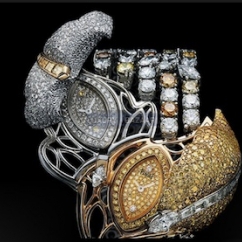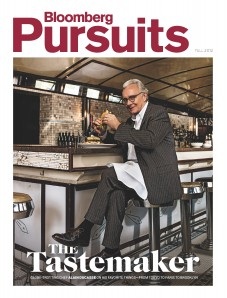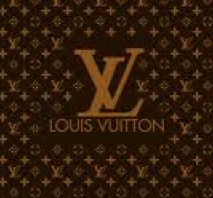Articles and News
How Will Luxury Perform In 2014? | January 07, 2014 (0 comments)

New York, NY—Having just come off a robust 2013 holiday season with significant growth, will luxury jewelers see the same kind of success in 2014?
According to three experts in the luxury field, yes. In a recent webinar titled "Luxury Outlook 2014: Up, Down, or Flat?" and sponsored by Luxury Daily, Mike Dukmejian, publisher of Bloomberg Pursuits, a magazine for ultra-affluent readers, said he expects continued growth in several key luxury categories, especially in watches, jewelry, and travel.
“Bloomberg forecasts luxury growth will be 3.6% globally and 4.1% in North America [in 2014]. We’re bullish on most categories,” he said, having seen no evidence of advertisers cutting budgets for the coming year.
Milton Pedraza, founder and president of the New York-based Luxury Institute, another panelist, is cautiously optimistic. He predicts both China and Europe will be slower in 2014, and the U.S. will “hold its own” but perhaps also experience a bit of slowing.
“I think it will be a good year, small g, not a Good Year, capital G,” he said. “In the United States, given how the stock market is performing and how real estate has gone up, we’re still not seeing the exuberance and spending among affluent consumers [that those conditions usually produce]. I think consumers are worried that the economy is being driven more by the Fed than underlying fundamentals, and even the wealthy are a bit more conservative than expected.” Pedraza also cast a wary eye on the tech sector of the stock market; he believes it is in a bit of a bubble, and a correction there will result in a correction in the entire market—and the stock market is closely correlated to luxury market performance.
Dukmejian acknowledges there could be some downside surprises, in particular if there’s further government wrangling over the budget. Such a showdown would have short-term effect. He and Pedraza agree the best strategy for luxury marketers is relationship building, with a focus the core affluent customers who have purchased before—not the aspirational customer who is more impacted by these shifts.


Above, Mike Dukmejian, publisher of Bloomberg Pursuits magazine, right, a luxury spinoff of the Bloomberg financial publishing empire. Below, Milton Pedraza, founder and president of the Luxury Institute, left, and Wolfgang Schaefer of SelectNY.


Video, the logo, and the big A. Will one marketing or retail channel become the breakout star of 2014? And do luxury retailers really need to fear the encroachment of Amazon into luxury?
Wolfgang Schaefer, global chief strategy officer of SelectNY, a global luxury brand strategy firm, believes 2014 will be about the convergence of all channels, rather than outsized growth in any one area. Luxury brands and marketers, which in the past have emphasized restraint and reticence, are stepping forward to connect with consumers where they are. For example, French fashion designer Thierry Mugler has a roaming truck, while cosmetics brand Clinique introduced vending machines—a far cry from its usual white-coated reps in department stores. The key is connecting and engaging with the customer.
Video already has been a standout means of engaging luxury consumers, and all the panelists predict that to continue. “We see video and [self-produced] film as a big part of the brand experience,” said Mickey Alam Khan, editor-in-chief of Luxury Daily, citing films from brands like Cartier, Tiffany, and Chanel; the latter of which even stars famed actress Kiera Knightly.

The famed Cartier leopard takes a journey in L'Odyssee de Cartier.
“The money spent on video is mind-boggling,” says Schaefer. “It doesn’t always translate to sales right away, but it’s amazing the way storytelling has taken off as a way to engage customers.”
Part of the reason, he believes, is that some luxury brands that over-commercialized themselves really need to get back to their roots. For example, Italian menswear brand Ermengildo Zegna uses video to highlight the production process and how intricately each garment is assembled. Elevating the brand to something with soul—not just more stuff—is a better strategy than just extending the brand into other categories to build sales, says Schaefer.
That doesn’t mean luxury companies can’t explore new brand avenues, says Pedraza, just do it where it makes sense. Every brand sees itself as a “lifestyle,” but too many brands are going into crowded categories where they have no expertise, he says. For example, Bvlgari hotels, or Burberry beauty.
“Luxury consumers are open-minded and willing to give brands a chance, but you’ll get the most volume if you get into a category that makes sense for you,” he said. For example, apparel brands should be successful expanding into accessories, or accessory brands into apparel.
“It’s very difficult to get traction in a totally new business. You have to have a very long-term perspective,” he said. Even Toyota’s Lexus brand took 10 years to really get established—and they’re both cars. But Toyota was a totally new player in the luxury market, he explained.
Another reason for the onslaught of video is simply because brands have by default become publishers who need to create compelling content for their own websites. As a result, brands engage users to upload content, creating a multiple dialogue, not a mass monologue, and incidentally connecting with them in a meaningful way.
“Not every user who follows a brand can afford the brand, but they can afford the fragrance,” says Schaefer.
Brands have to embrace that some things are bigger than making a profit. Showing they care about the people who buy the brand, and the environment it’s made in, is essential. For example, Hermès, which always has been mindful of its impact on the environment, introduced “Petit h,” with the tagline “We don’t throw anything away.” Petit h is a line of items its artisans make from the excess leather generated when a handbag is made. The items are every bit as luxurious as the ones from which they were cast off. Meanwhile, American Express’s “Shop Small” campaign is designed to emphasize to businesses that they’re there as a partner to help build business, not just to cut into profits, he says.

Classy graffiti from Hermes.
Another trend we’re likely to see in 2014 is the return of the logo, at least to some degree. While status-mad Asian consumers are moving toward a more private, intrinsic experience, Americans are getting weary of everything having to be a somber socio-ecological experience, says Schaefer. Spending money is fun, and it’s time to treat it like fun again.
“We still do want to show off a little,” he says. It’s not all about the subtleties of experiential or intrinsic value—you can care about the quality, the environment, or corporate responsibility, but you have to have a label somewhere, he says. “It’s ok to celebrate spending money.”
“Be honest as a brand. Whatever you do, don’t fall for ‘cool’ as a factor. Be yourself,” says Pedraza.

When the recession hit, affluent consumers didn't want to be conspicuous, so they either reined in spending or at least tried to look restrained. But now luxury consumers are ready to show off a little and logos are poised for a comeback, say luxury market experts.
While the experts agree there may not be one standout channel for luxury in 2014, the closest thing might be mobile; in particular, tablets.
“E-commerce is all about the immediacy of the purchase. You see pictures posted, people talking, you want to buy it then and there,” says Dukmejian. “Try to get your website up to the quality of Amazon, and it may overcome the fear of Amazon’s incursion into luxury.”
Personal shoppers online are Pedraza’s favorite strategy for competing with the likes of Amazon in the luxury space. It’s all about relationship building, and luxury retailers should harness that in their salespeople.
“I don’t see Amazon as a super-luxury player,” says Dukmejian. His advertisers—he calls them partners—cater to not even the 1%, but to the 0.10%, and Amazon is not what those brands are doing.
Still, brands Burberry, which is on the leading edge of digital and lots of hospitality brands are able to use social media as a customer service medium, says Pedtrazza.
“There’s power in the picture. Facebook may not be Amazon, but your customers do see pictures on Instagram and Pinterest, etc.
“Luxury companies still are behind others in technology,” says Dukmejian. “If we learned any lesson from 2013 it’s that we have to embrace the digital world faster and more innovatively.”
Top image: Piaget watches, Luxurybazaar.com







